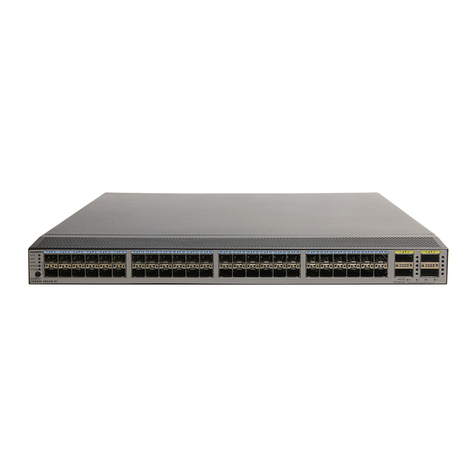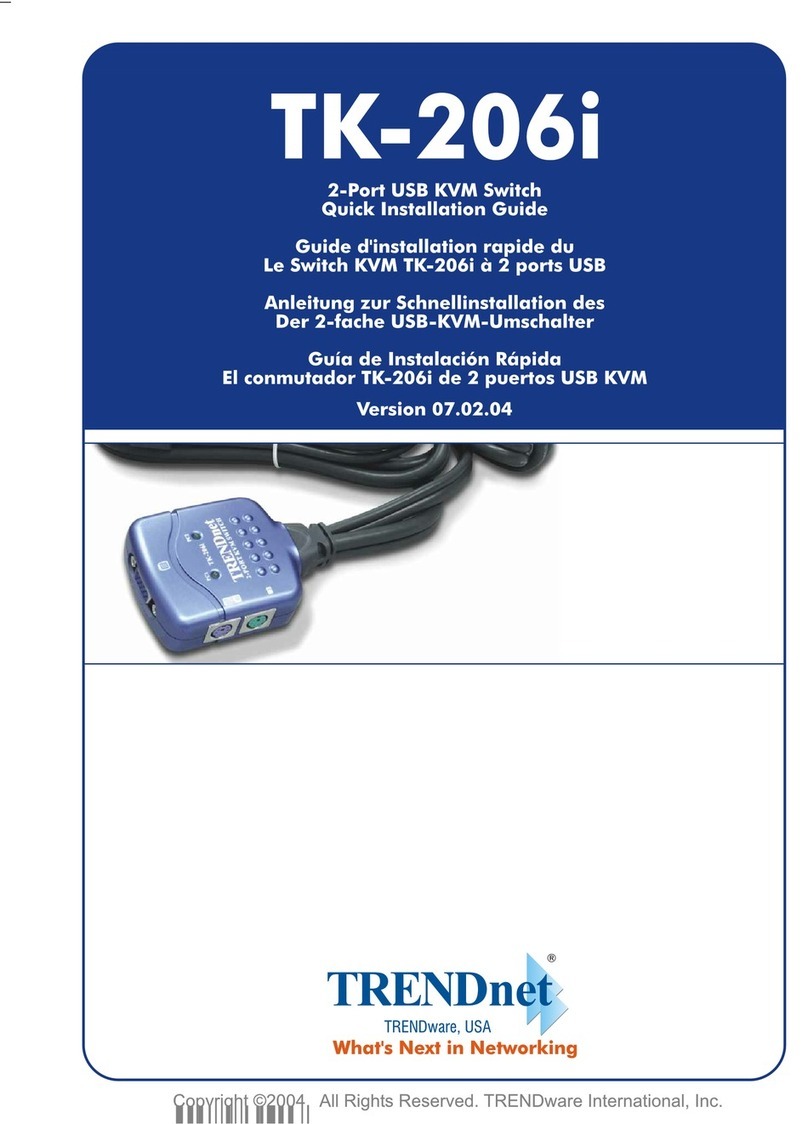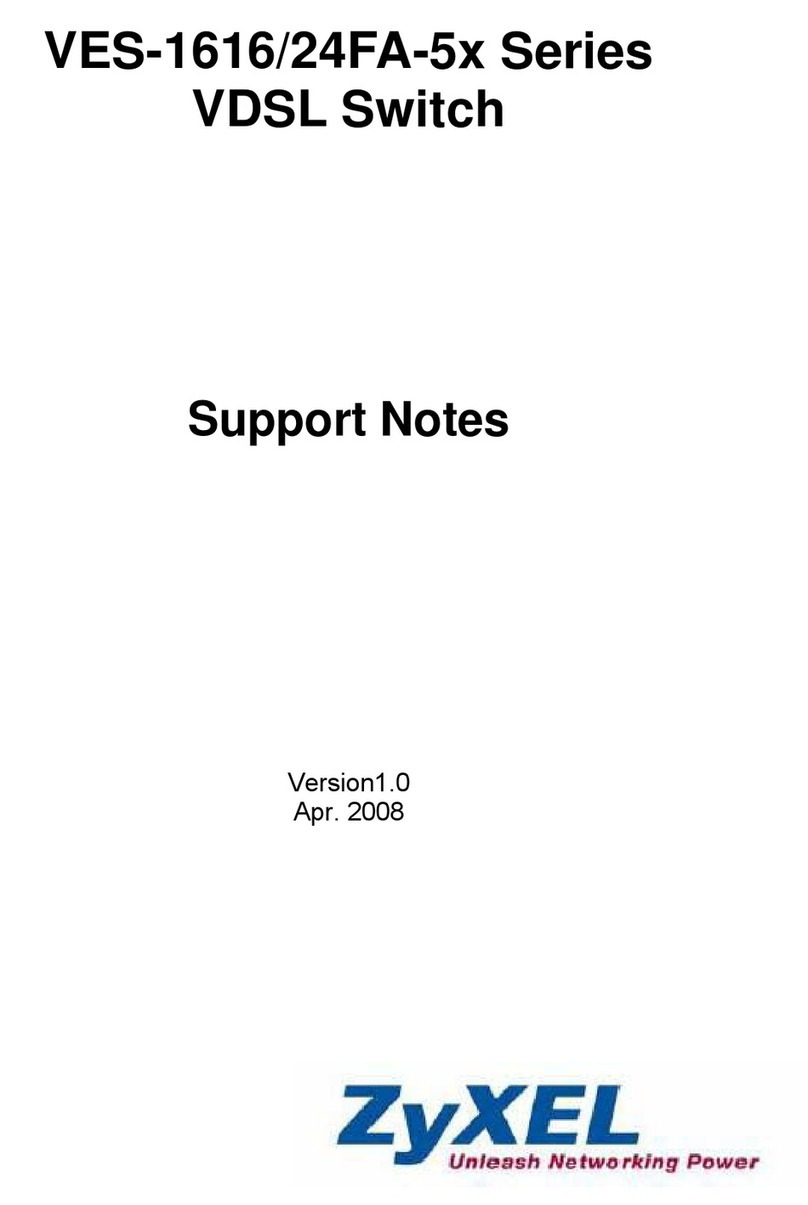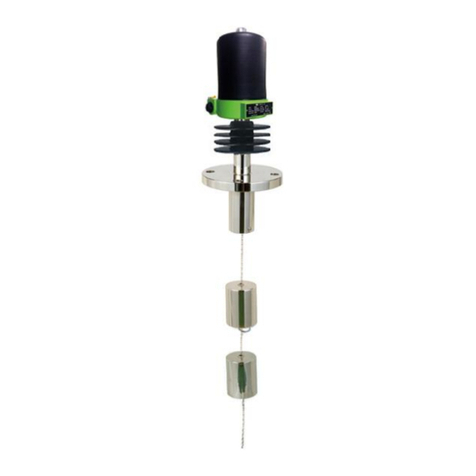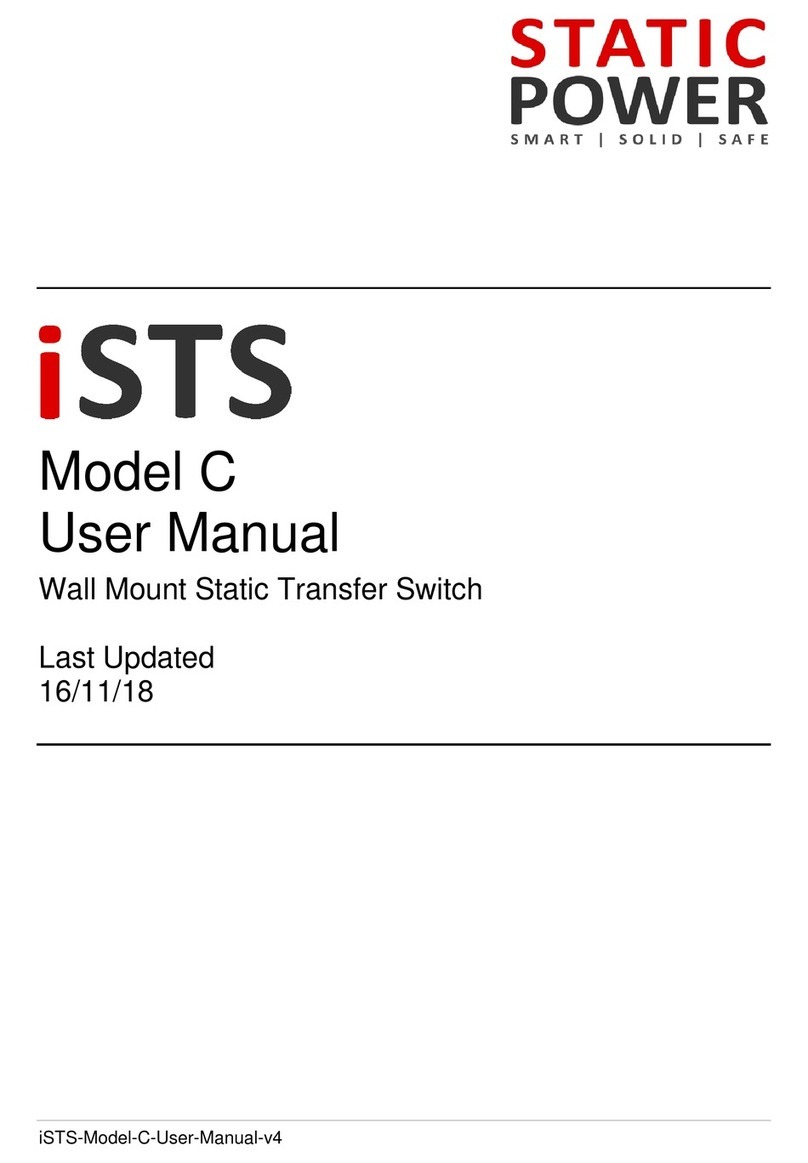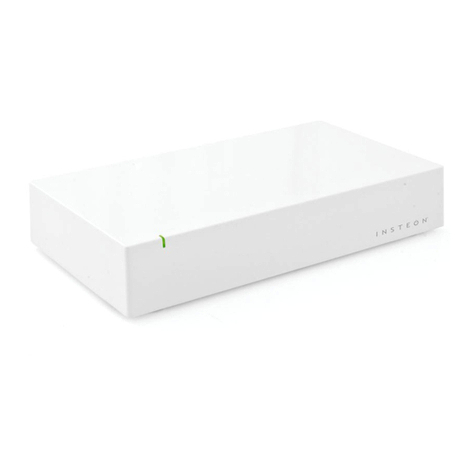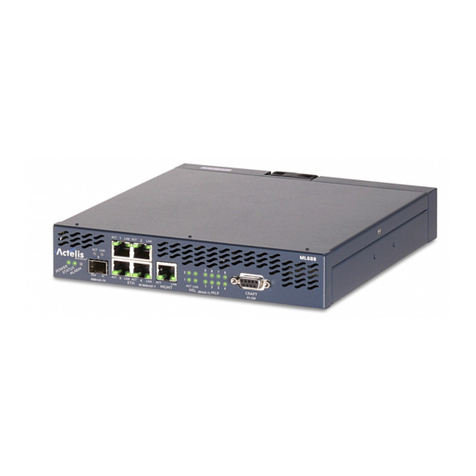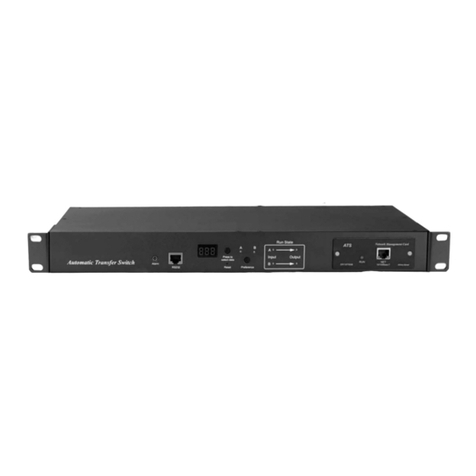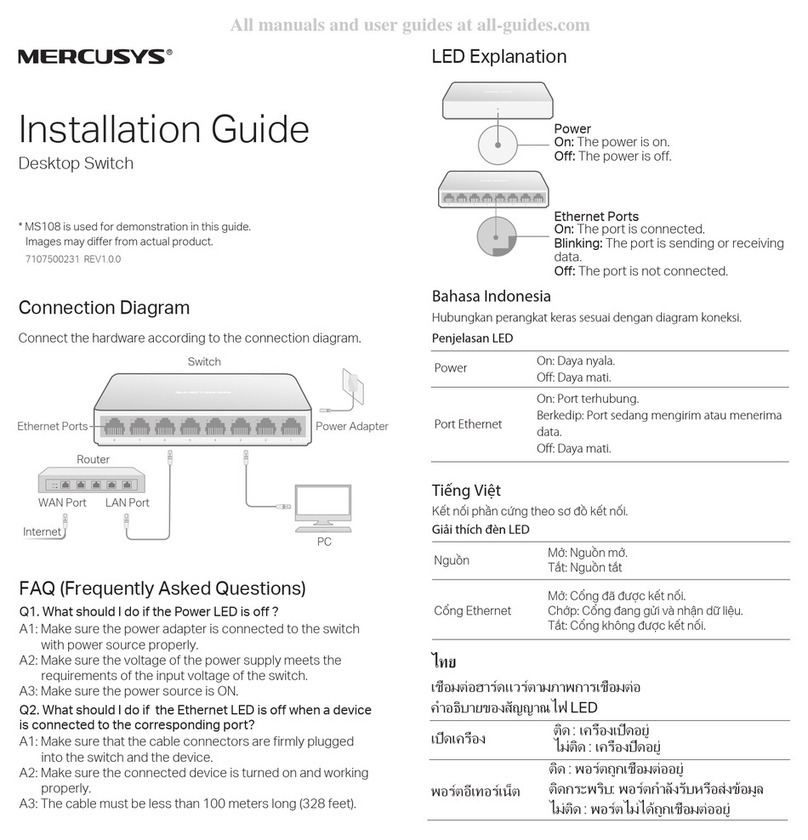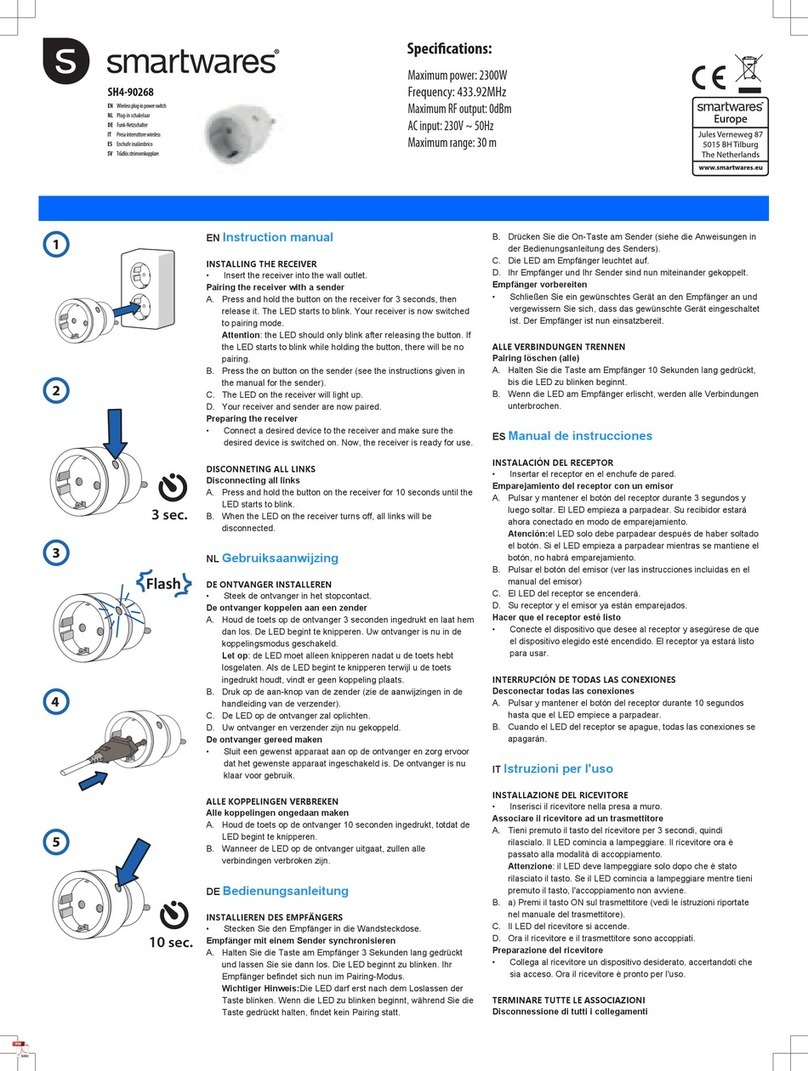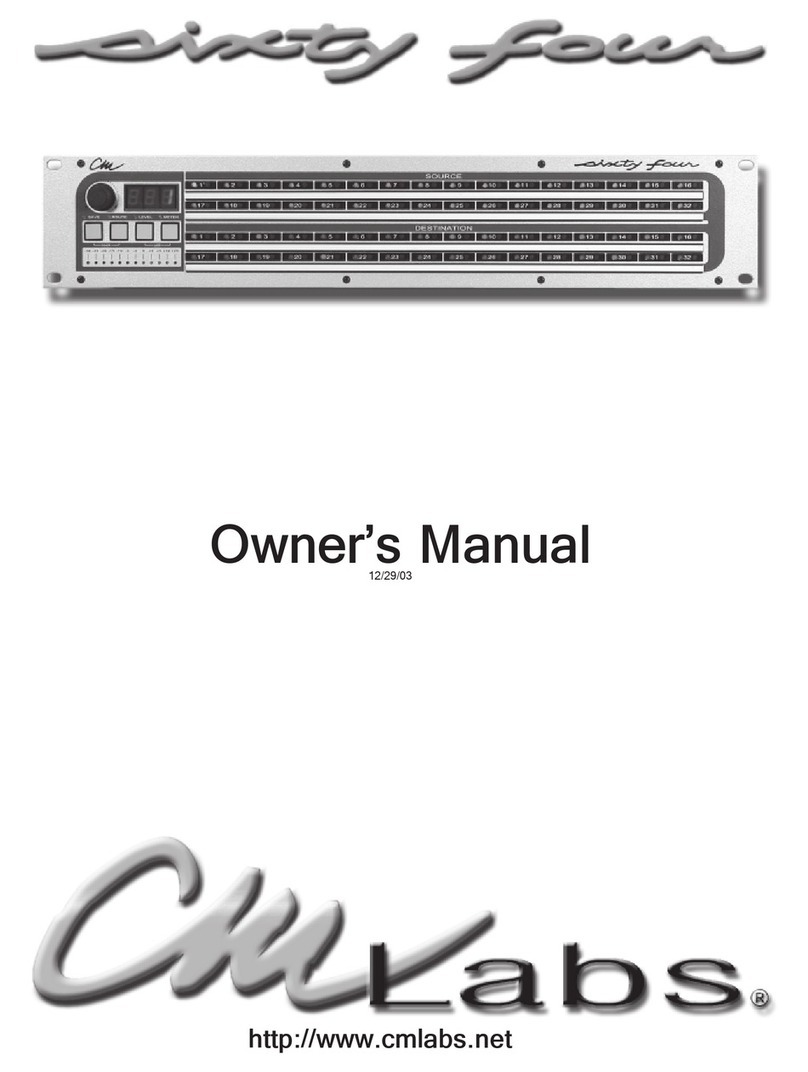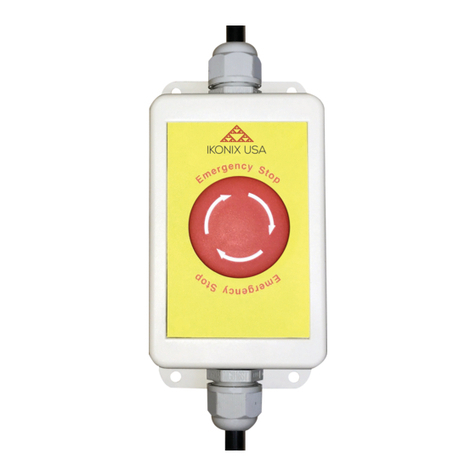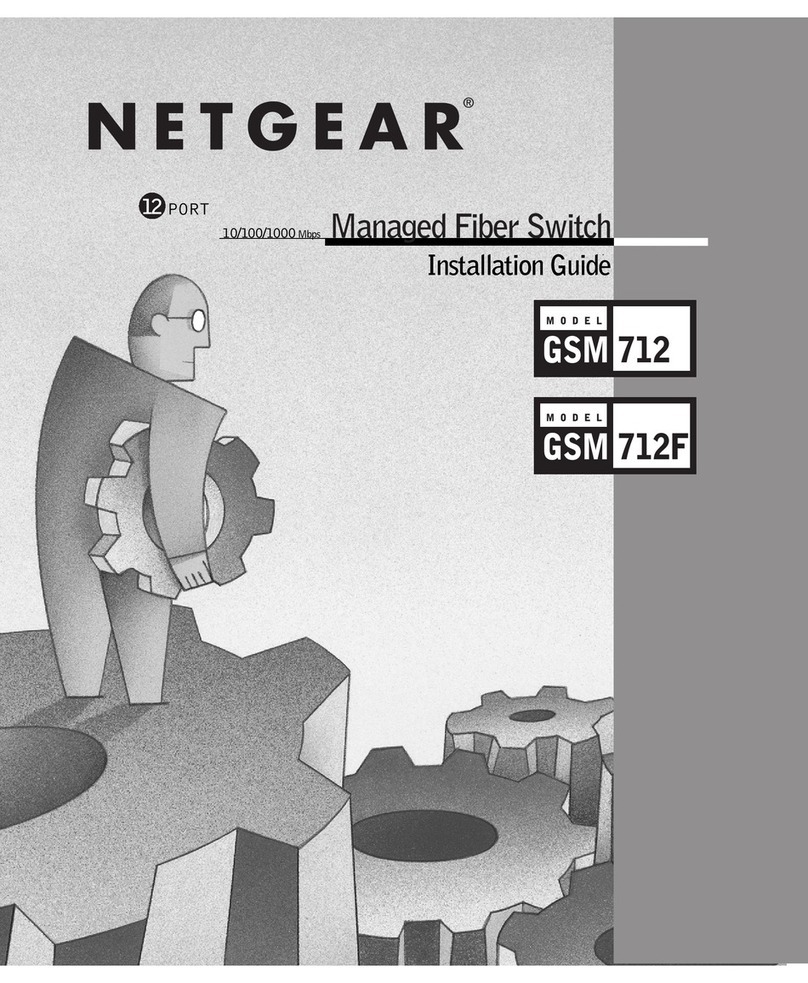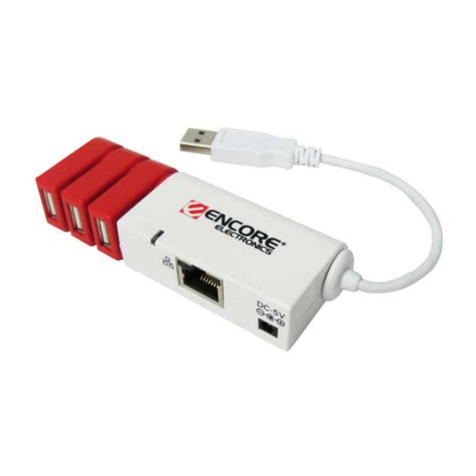INFLUX MEASUREMENTS SPDB 30 Owner's manual

IOM SPDB Iss.2 ENG March 2019 Page 1 of 6
1A Bennett House, The Dean, Alresford, Hampshire, UK. SO24 9BQ
Tel: +44 (0)1962 736736 Fax: +44 (0)1962 736737 Email: sales@influxmeasurements.com
A GUIDE TO THE INSTALLATION, OPERATION & MAINTENANCE OF
Flow Switches SPDB 30/90
FLOW SWITCHES IN AUTOMATIC SPRINKLER INSTALLATIONS
Contents: Page
1 Specification & Principle of Operation 2
1.1 Introduction 2
1.2 Construction & Specification 2
1.3 Principle of Operation 2
2 Installation 3
2.1 Mechanical 3
2.2 Electrical & Power Supply 5
3 Operation 6
3.1 Flow 6
3.2 Auxiliary Relay Output 6
4 Maintenance 6
4.1 Normal 6
4.2 Fault 6
T
YPE
-
F
IREGROOVE
T
YPE
-
F
IREFLANGE
M e a s u r e m e n t s L t d
Quality Systems Certificate No. 464
Assessed to ISO 9001:2015
24

IOM SPDB Iss.2 ENG March 2019 Page 2 of 6
1 Specification & Principle of Operation
1.1 Introduction
The SpinklerSense SPDB type is a water flow alarm switch, approved to EN 12259-5 and for use under the
LPCB rules for automatic sprinkler installations.
The SPDB is a thermal dispersion type flow switch for use on wet sprinkler systems approved for use through
sizes 2 to 6” (50 to 150mm).
1.2 Construction & Specification
Sensor Probe & Connection: 304 Stainless Steel, R¾ (3/4” BSP Male Taper thread)
Sensor & Relay box: Painted die cast Aluminium enclosures to IP65
Max Operating Pressure: 20 bar
Operating Temperature Range: 2 to 68C
Input Voltage: 24V D.C.
Flow Switch Output: 1x DPCO Relay, 30V D.C., 2A
Adjustable Delay: Type SPDB 30: 0 to 30 seconds
Type SPDB 90: 0 to 90 seconds
Flow-rate Sensitivity: The switch will operate at all flow-rates above 60 L/min
The switch will not operate at flow-rates less than 10 L/min
1.3 Principle of Operation
Water flow passing the sensor probe causes a change in relative temperature between the sensor probe legs,
which is directly proportional to the flow-rate in the pipe. The sensor circuit measures this flow precisely,
comparing it to the set alarm flow-rate. When the measured flow-rate reaches or exceeds the set flow rate, the
flow switch output operates immediately or after the set delay period. When the flow-rate reduces below a set
point, the switch automatically resets.

IOM SPDB Iss.2 ENG March 2019 Page 3 of 6
2 Installation
2.1 Mechanical
These switches may be mounted in horizontal or vertically up pipe run sections.
The recommended arrangement is that the R ¾ mounting thread is connected to the pipe using suitable approved
threaded Mechanical Tees and where required, a threaded reducing socket. This will allow fitting or removal of
the switch without disconnecting the electrical connections.
The Table 2.1.a shows the recommended Mechanical Tee sizes and reducing sockets. Alternatively, a welded
thread socket may be used. In the case of the 60.3 and 76.1mm pipe sizes a 1” weld socket thread and ¾”
reducing socket may be required. When installing in a horizontal pipe run the probe should be inserted into a
side or top position. Care should be taken to avoid the possibility of positioning the probe where a permanent air
pocket is likely to occur.
Table 2.1.b shows mechanical Tees and adaptors that can be used when replacing a mechanical flow switch in an
existing installation.
After applying suitable thread sealant or PTFE tape to the threads the unit should be hand tightened into the
Mechanical Tee and then finally tightened using a spanner to form a pressure tight joint, ensuring the units flow
direction arrow is pointing along the pipe axis in the direction of flow towards the sprinkler head.
2.1.a. New installation
Pipe OD
mm
DN Inches
Nominal
Recommended Threaded
Mechanical Tee
Reducing Socket M/F
60.3
2”
2 x ¾
n/a
76.1
2
½
”
76.1mm x ¾
n/a
88.9
3”
3 x ¾
n/a
114.3
4”
4 x ¾
n/a
165.1
6”
165.1mm x 1
½
1
½
x ¾
168.3
6”
6 x 1
½
1
½
x ¾
2.1.b If replacing Mechanical Flow Switch
Pipe OD
mm
DN Inches
Nominal
Recommended Threaded
Mechanical Tee
Reducing Socket M/F
60.3
2”
2 x ¾
n/a
76.1
2½”
76.1mm x ¾
n/a
88.9
3”
3 x 1½
1½ x ¾
114.3
4”
4 x 1½
1½ x ¾
165.1
6”
165.1mm x 1½
1½ x ¾
168.3
6”
6 x 1½
1½ x ¾

IOM SPDB Iss.2 ENG March 2019 Page 4 of 6
2.1.b Top and side mounting positions on horizontal pipe

IOM SPDB Iss.2 ENG March 2019 Page 5 of 6
2.2 Electrical & Power Supply
Before installing the unit the flow signal delay timer can be set. Remove the top lid and locate the rotary
position switch mounted on the PCB. Setting ‘0’ will select the minimum delay and setting ‘9’ the maximum
delay. Settings between these will set the delay proportionally. The factory set default position is 9.
Two 20mm holes are provided for cable entry. These should be fitted with appropriate cable glands or conduit
depending upon site requirements. There is no requirement to seal the conduit entry holes if conduit is used.
The SprinklerSense unit requires a D.C. power supply connection. This allows it to be supplied using
proprietary battery backup systems of 24V DC. The average power consumption of the unit is circa 1Watt.
The Amp Hour (Ah) rating of the batteries required can be calculated using an average current draw of 60mA on
a 24V system. This mA figure should be multiplied by the number of hours that the batteries are required to last.
For example, if a 24V backup battery is required to last for 72 hours, 0.06A x 72h = 4.32 Ah.
There-fore a 24V battery supply with a rating of at least 5Ah should be used.
The power supply connections should be connected to the V+ and V- terminals. The Earth terminal should also
be connected to electrical earth.
There are two flow output switches. These both activate at the same time but are electrically isolated from each
other. Each output switch consists of a common connection (COM1 or COM2), a Normally Open contact (NO1
or NO2) and a Normally Closed contact (NC1 or NC2). The contacts are in their Normal state during non-flow
conditions. The output switches should be connected as required, in the same way as traditional flow switch
micro-switch outputs. The contact ratings of 24V D.C. and 500mA should not be exceeded.
DO NOT CONNECT THE REMAINING TERMINALS WITHOUT REFERRING TO THE SEPARATE LEAFLET WHICH IS
AVAILABLE FOR FURTHER INFORMATION ABOUT THE AUXILIARY CONNECTIONS.

IOM SPDB Iss.2 ENG March 2019 Page 6 of 6
3 Operation
3.1 Flow
The SprinklerSense flow-switch is designed to activate and maintain its switch relay output in the event of
detecting a flow of water initiated by a sprinkler head becoming active or through operation of an inspector’s
valve under test conditions. This switch output is delayed for a set duration based upon the delay time setting
chosen at the installation stage.
The switch relay output will automatically reset should the flow-rate reduce to less than 10 L/min.
Following installation, the flow switch function should be tested and checked by flowing water through the pipe
ensuring an alarm signal is activated and received. As well as testing the flow switch this will ensure that the
sprinkler system valves and alarm connections are operational.
3.2 Auxiliary Relay Output
A further auxiliary relay is provided in the unit, which can be used for other supervisory duties, outside of the
scope of EN 12259-5. A separate leaflet is available for further information on additional functions.
4 Maintenance
4.1 Normal
The SprinklerSense flow-switch uses solid state sensing technology, and requires no routine maintenance in
normal operating conditions. Ensure any valves controlling the water supply to the sprinkler installation have not
been closed, that the water supplies have been verified, that there is no interruption to the power supply, and that
output and communication lines are correctly connected. Flow switch function and alarm outputs should be
routinely checked as required.
4.2 Fault
Should the switch fail to respond to a water flow greater than the set point, the complete unit should be removed
from the pipe-line and inspected for any obvious mechanical damage or excessive pipe-line debris that could
cause blocking. In the event that no obvious cause of failure can be identified, the complete unit should be
replaced.
This manual suits for next models
1
Table of contents
